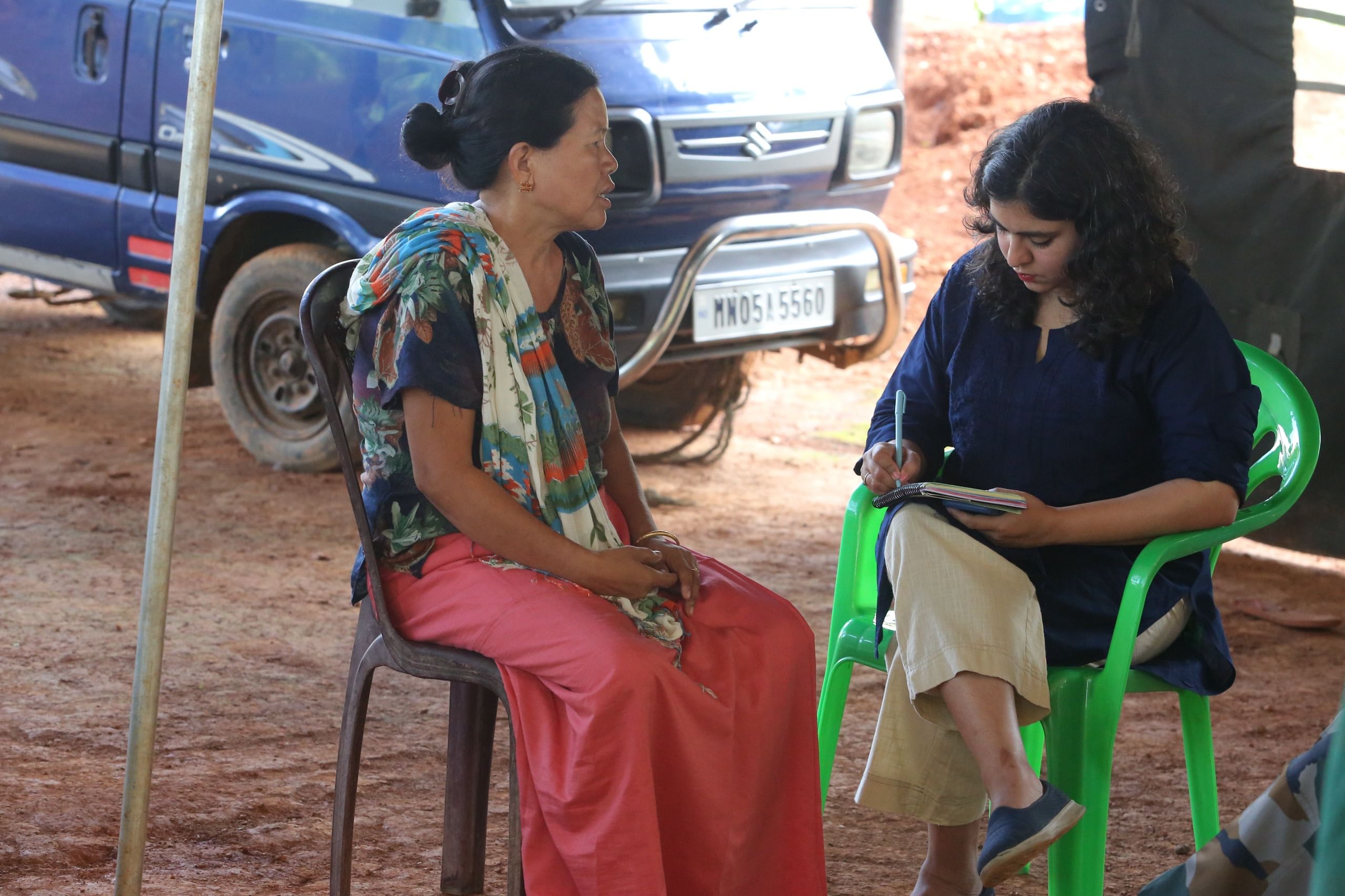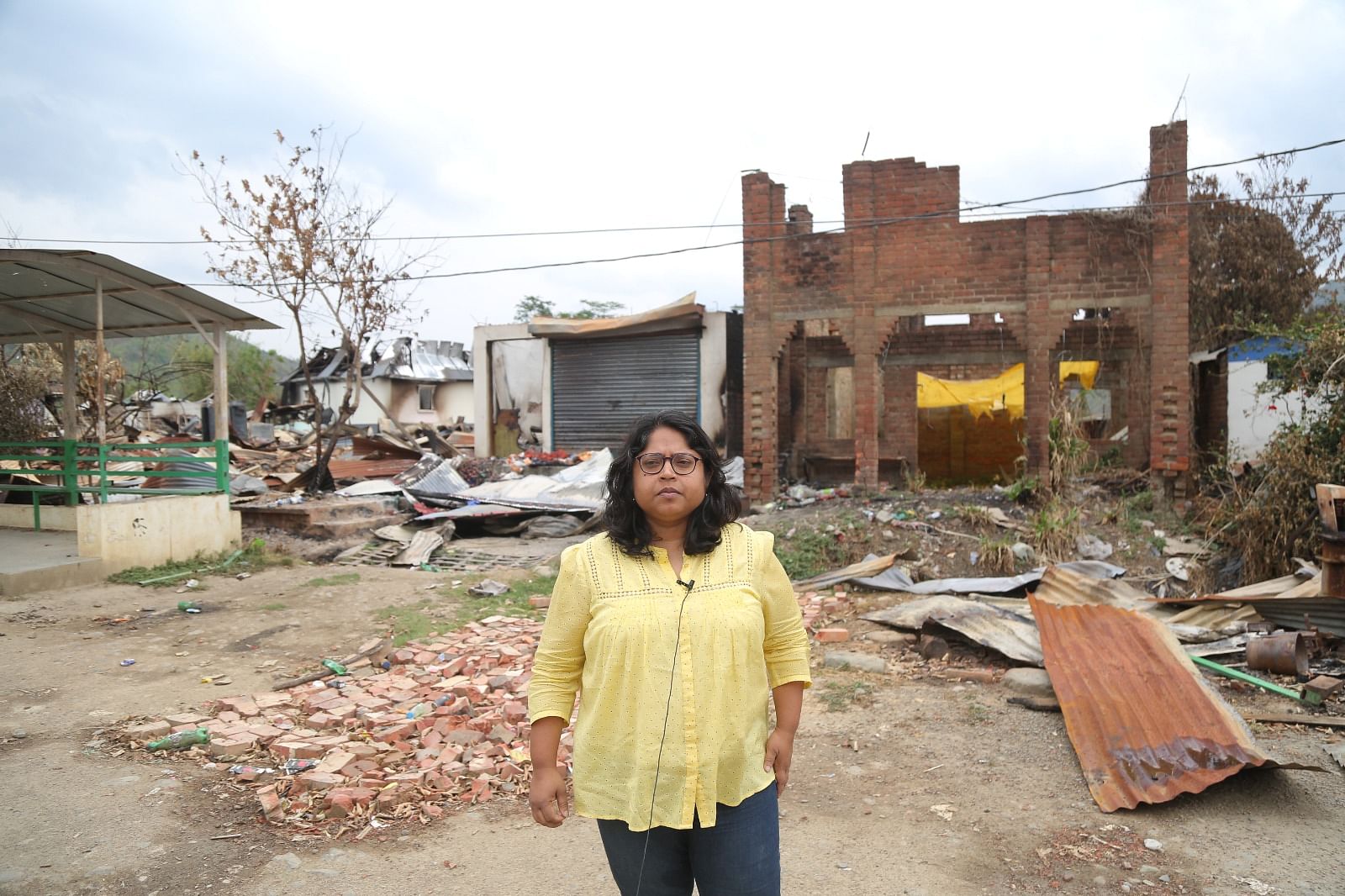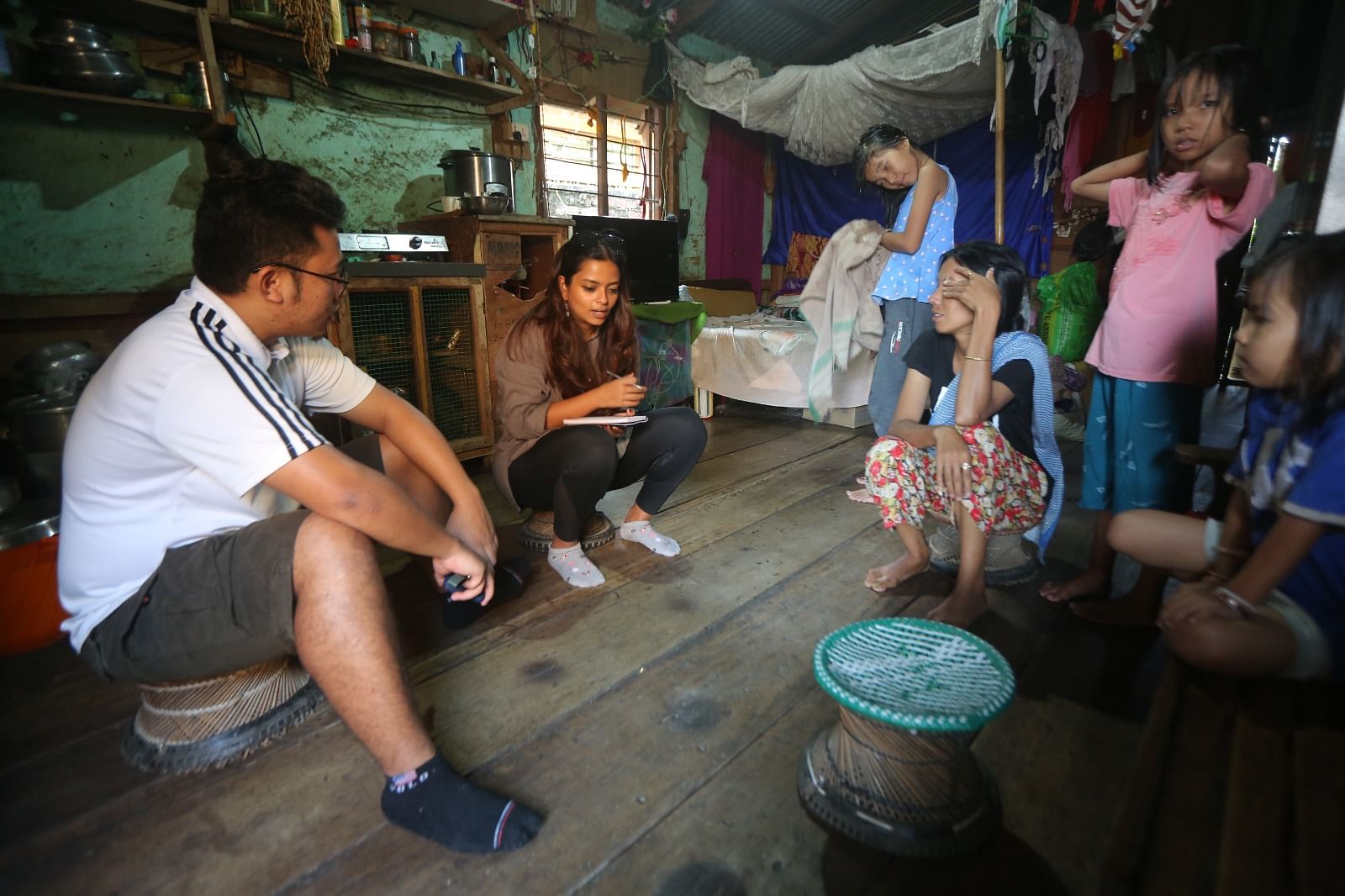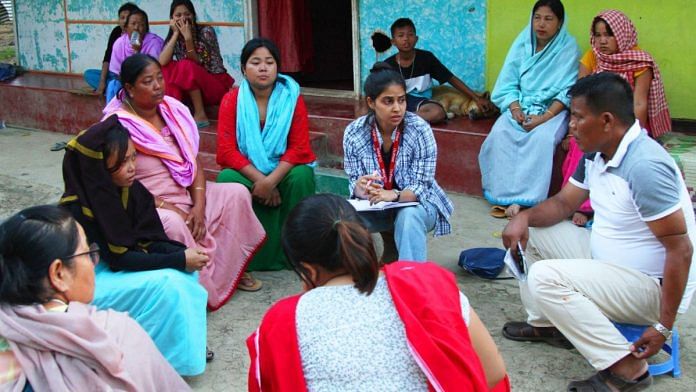If there is one thing everyone at ThePrint agrees upon—and we don’t always agree —it’s that our coverage of the ethnic distress in Manipur was the most important piece of journalism we did in 2023.
From May to July, at least six correspondents and photojournalists from ThePrint went to the state—this was at the peak of the violence between the Meiteis and Kukis—and reported on a violent conflict that continues to this day.
In June, I had written in one of my Readers’ Editor columns, “The primary difficulty faced by editors and reporters was simple in its complexity…How do you convey the intricacies of a historical enmity that suddenly turned violent — and acquired the contours of a potential civil war — when few people even know where Manipur is on the Indian map?’’
Yet, that is precisely what ThePrint’s journalists set out to do. While Manipur fell off the news map of the mainstream media—both print and broadcast—ThePrint remained steadfast. During those three months, its reporters travelled through Manipur, to describe the siege within the state.
They may not always have been able to untangle the complex animosities between the Meiteis and Kukis but their articles did convey the profound sense of alienation between two communities.

No other media organisation committed as much time, effort or resources to being there, on the ground. For example, ThePrint did more than 30 stories datelined Manipur in May alone. Ananya Bhardwaj, Associate Editor spent over six weeks in the state in the summer of its brutal discontent. She recalls a foreign correspondent on his second trip, saying to her in some surprise, “You’re still here?’’
Self praise may not always be the best praise, but in this case, it is deserved: ThePrint’s unwavering focus on Manipur was a constant reminder to everyone—the public, the politicians and to the media—who forgot or willfully ignored the turmoil in the Northeastern state. The Karnataka elections, or the Prime Minister’s official trip to the US received far more attention than Manipur this summer.
Also Read: Ahilyabai Holkar, Nehru, USSR — ThePrint’s PastForward tells us how we got here
A year of awards
The reason I have singled out ThePrint’s Manipur coverage in this 2023 report card, is that it defines the website’s journalism: report, report from the ground, report in depth. “Write what others don’t,’’ is how Political Editor, DK Singh put it. For Snehesh Alex Philip, Deputy Editor, ThePrint does “stories the public not only wants to read but ought to read’’.
Nisheeth Upadhyay joined ThePrint in January 2023 as Editor (Operations). “I came here because no one else is doing quality journalism in the digital space… or doing distance journalism,’’ he said, “Sending people out to report makes a big difference—you find stories, stories hiding in plain sight.’’

Just to underscore the importance of this approach: Ananya Bhardwaj and Sonal Matharu, then Senior Assistant Editor, won awards for their coverage of Manipur. Bhardwaj won the second Danish Siddiqui Freedom Award for her overall coverage of Manipur. Sonal Matharu’s story on the rapes of women in the state won the third prize at the Press Institute of India-International Committee of the Red Cross Award. Matharu was also perhaps the first journalist to write about the rapes before a video of women being paraded naked, surfaced in July.
In March, Jyoti Yadav and Bismee Taskin won the prestigious Ramnath Goenka Award for their coverage of the migrant exodus across Bihar and Uttar Pradesh during the Covid lockdown in 2020.
These awards followed ThePrint winning the International Press Institute’s (IPI) Award for Excellence in Journalism 2022 in February for its in-depth coverage of the Covid-19 pandemic.
Winning awards is a recognition of ThePrint’s journalism, but public reaction is equally important. ThePrint is now well-known. Mention that you work at ThePrint and you receive nods of acknowledgment. Earlier, you had to explain, “You know, Shekhar Gupta’s website.’’ No longer do we have to take the name of the Editor-in-Chief to identify ourselves.
ThePrint has established itself as a brand of good journalism. The number of readers who write to the Readers’ Editor has increased this year. Some compliment it, some find fault– and that’s fine. It means they’re taking ThePrint seriously and find it worth reading.
Also Read: ThePrint’s Delhi team is its heart but state reporters are its arteries—Chennai to Chandigarh
Conversation starters
Manipur may have been ThePrint’s story of the year, but there’s been solid reporting and analysis elsewhere too. From my reading and conversations with its editors, it’s clear that besides big news stories, like say Qatar commuting the death sentence of eight Indians, the focus remains on going where no one else has gone – or hasn’t gone deep enough. By the way, ThePrint had alerted readers to Qatar’s espionage allegations against the Indians, in April.
We’re looking at stories that are “conversation starters”— this was a constant refrain from editors I spoke to. How successful we’ve been, only readers can tell.
I can single out individual articles—think of the Science team’s articles on Chandrayaan-3’s moon landing; the deep dive into the ‘Khalistani movement’ ; exclusive interviews from inside the Gaza strip after Israeli bombardment began
In the realm of defence, there were detailed reports on the Rafale and Scorpene aircraft deals. And from Sikkim, on-the-spot reports of the glacial flood outburst.
And what about the article on changing India to Bharat in NCERT school textbooks—that was quite a break.
Health remains at the top of the charts for ThePrint and it is primarily propelled by Editor-in-Chief Shekhar Gupta’s knowledge and interest in the subject. I can remember a deep dive into the government’s response to international complaints about the quality of cough syrups produced in India—and a hard look at the diabetes drug Ozempic being used for weight loss, since its sensational success across the world.
Politics may have been dominated by coverage of the six assembly elections— Karnataka, Telangana, Madhya Pradesh, Rajasthan, Chhattisgarh and Mizoram—but, here again, ThePrint wasn’t reporting routine campaign stories: I remember a detailed analytical article on the Congress and BJP in Telangana or this unusual story from the Congress Plenary session earlier this year.
A personal favourite is this data analysis on the composition of BJP ministries – central and states.
And I haven’t even begun to tell you about ThePrint’s long form journalism – we call it ‘Ground Reports’ now. Opinion & Ground Reports Editor, Rama Lakshmi told me the idea has been to widen the scope in the South and to the East and to encourage more features on science. Here are a few examples from Nagaland, Hyderabad, Sriharikota and Kerala.
Also Read: ‘Please help me’ — readers write to ThePrint. Their way of expressing confidence in us
Consolidation to innovation
As I write this piece on a cold December morning in Delhi, and think about ThePrint, the first word that comes to mind is consolidation. That is what this year has been about for ThePrint. Many journalists have left, and many new faces have replaced them. The vital outstation team has grown—there are now 13 state correspondents and or editors whose valuable contribution informs all ThePrint’s coverage.
This is another distinctive feature of ThePrint—it tries to avoid “headquarter journalism’’ as one editor neatly described the habit of reporting from Delhi on events elsewhere in the country.

The second word is integration. As a digital newsroom this is vital to our functioning—the different departments have to work together without borders defining work areas. Towards this end, the editing and social media desk has been integrated into one team; reporting on foreign affairs, defence and national security is now more seamless given that what happens in Canada affects Punjab—to give you the example of the Khalistani stand-off.
The third word is packaging; each story needs to be written well, edited even better and buttressed with good photographs or infographics—and then be converted into a video or podcast product too. The process is still underway, but it’s the objective.
Fourth on the agenda: innovation and new products. New YouTube shows such as Sankat Suraksha Aur Swami, Standard Deviation, Mumbai Matters, Thinking Medieval, and StateDraft have taken off. Janki Dave, News Editor and Head of Video, says the video team is “refocussing’’ on shorter, newsy videos and explainers—typically, anything between one to five minutes.
Of course, Shekhar Gupta’s ‘Cut the Clutter’ (CTC) continues on its merry way—it’s as popular as ever. If you look carefully, you’ll notice there’s an effort to add more visual elements to it.
DK Singh’s weekly ‘Politically Correct’ videos and columns are in high demand too—I suspect that’s because he doesn’t pull too many punches, politely, of course.
At the end of the day—and the year—ThePrint has much to be proud of, but much to still achieve. It’s work in progress. What would be extremely helpful is more feedback so that we better understand what readers want—and what ThePrint needs to give them.
Shailaja Bajpai is ThePrint’s Readers’ Editor. Please write in with your views, complaints to readers.editor@theprint.in
(Edited by Theres Sudeep)




Kudos to the print team.on an outstanding job. You are right to focus on news not just that we want to read but we ought to. Focus on the first is what leads to some newspapers becoming just a long form version of Page 3 and celebrity gossip. The Manipur coverage definitely highlighted this aspect more than others. I, myself, found myself following the Manipur coverage not because I was inclined to or in the mood for, but because if felt I needed to.